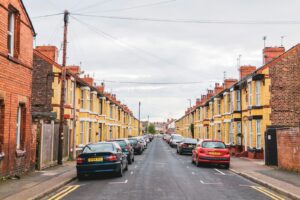From lampposts to phone booths: using technology to create civic spaces
 Paul Mason recently listed ‘the 10 things a perfect city needs‘, ranging from hipster economics to political unrest, but with no mention of public space!
Paul Mason recently listed ‘the 10 things a perfect city needs‘, ranging from hipster economics to political unrest, but with no mention of public space!
Other city indexes focus on public space, like those produced by the EIU and Monocle. Where they differ from Mason’s is their data-driven approach.
If you took their methods to their logical conclusion, we could end up living in a world where democracy is replaced by a Panopticon, tracking everything to ensure the places we live are aligned with these indexes. Imagine your council’s promise in 2030: ‘If it’s not measured, it won’t get done’. Part of the smart city movement believes we’ll soon be able to create algorithms for how cities should be run.
While one day, the smart city may be able to track every interaction we have with the spaces around us to design the optimal ‘user experience’, we value public spaces in much more instinctive ways – like our trip to the seaside as a child or our first kiss in the park.
However, we’ve had smart city movements before, from Roman builders to Victorian engineers, transforming our lives for the better, introducing new technologies to help us travel quicker to managing our sewage more efficiently.
Nowhere is this more visible than by the sea. As Dan Thompson highlights, seaside towns were ‘the places that industry carried out its research and development. They are scattered with rusted remains of prototyped cutting-edge technology, from concrete seawalls to mechanical marine lifts’.
The difference nowadays is that it’s become much easier for citizens to use the infrastructure that technology runs on to carry out our own research and development, from creating a website to 3D printing a house.
So before we throw the 3D printed baby out with the bathwater, let’s explore how we can support citizens to use technology to make the best use of the spaces around them.
But first we need to explore the opportunities there are for people to make the best use of the spaces around them, let’s understand what motivates people to use public spaces, using Demos’ typology of different users of public space.
What influences people most in whether public spaces meet their needs, is the level and type of interaction they expect to have with others. Some groups look to spaces where institutions will structure and control interaction like shopping malls, churches or sports clubs. Other groups prefer to use public spaces as infrastructure to create new forms of interaction, from doing hobbies together, watching over the neighbourhood to more spontaneous interventions.
There are different models of how cities should be designed. As you can see from this diagram, they cater to very specific types of users of public spaces. The challenge our society faces is that it’s becoming increasingly difficult to relate to people who don’t think or act like us. People who don’t feel comfortable interacting with people they don’t know feel threatened by those who want nothing more than this. People who want things to stay the way they’ve always been are challenged by those who want to disrupt the way things are done to stimulate innovation.
Trying to organise public spaces based on the design principles of a particular model will therefore always create inequalities between different groups. What’s most important is to support different forms of interaction that can complement each other.
So how can we create ‘in between spaces’ which are at the intersection of spontaneous and curated activities, of formal and informal design and of intimate and collective interactions?
We can invert roles, getting citizens to be the designers of their local parks. We can subvert resources, filling sweet machines with seed bombs so children can grow their own food. We can graft practices from other field, like using sensors and gaming to get lampposts to talk to people. In other words, we can find new ways of using existing resources which may never have been used in public space.
As Demos argue: ‘If we can get the micro public spaces of street corners, cafés, malls and parks to flourish in a way that simultaneously meets people’s personal needs and the wider common good, then this intelligence and the patterns of interaction stimulated might just ‘trickle up’ and start creating patterns and value on the next scale up.’
- Kent Connects is launching a programme connecting students, community groups & digital innovators to develop solutions that use technology to help people make the best use of public space. For more information, see www.transformedbyyou.com















